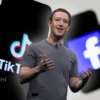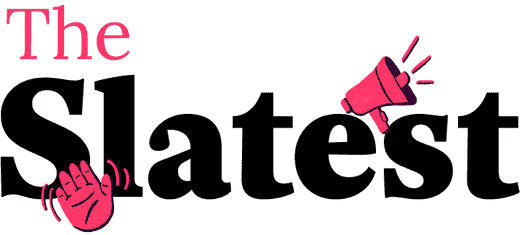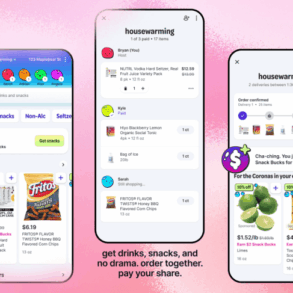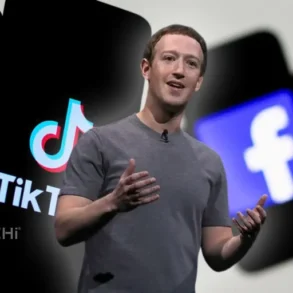Sign up for the Slatest to get the most insightful analysis, criticism, and advice out there, delivered to your inbox daily.
BuzzFeed, the defining American digital media empire of the Obama years, now stands as an unrecognizable, rotted husk of its former self. In the decade that has passed since the peak of its influence, the iconic company has laid off thousands of staffers, shuttered its News division, undergone a disastrous SPAC-fueled public offering, acquired competitors like Complex and HuffPost only to strip them for parts, and shed all the kingmaking clout that allowed it to catapult myriad reporters, comedians, podcasters, and dresses to durable fame.
The story of BuzzFeed’s decline is, in many ways, the story of social media’s vibe shift. Facebook was resplendent with the website’s listicle clickbait and recipe videos before the platform pivoted away from news and toward virtual reality and artificial intelligence. Twitter, once the reporters’ watercooler and the social justice movement’s bullhorn, lost all its reliability and journalistic prowess after Elon Musk’s takeover. Upstart communities, like Bluesky and Threads, that have arisen to fill in the Facebook/Twitter niche are still finding their footing and building their audiences, lacking the monocultural critical mass that might allow a BuzzFeed-like publication to ride engagement algorithms to virality. And today’s most vibrant platforms—namely, Instagram and TikTok and YouTube—are driven by visuals and built to keep your attention locked into their smartphone-optimized feeds at all times, instead of following links to the broader internet.
So what should BuzzFeed do to regain its onetime foothold in internet culture? Start its own social network, of course.
Such a prospect was teased earlier this month, after Semafor—the scoopy news site run by former BuzzFeed News editor-in-chief Ben Smith—got hold of a leaked Slack message from BuzzFeed founder and CEO Jonah Peretti. “It’s clear we can’t rely on the platforms to create a positive environment for content creators like us. I’m beginning to think we need to create our own social media platform,” Peretti wrote, alluding to the conservative drift of social media pioneers like Mark Zuckerberg. “Big role for us to play as the underdog publisher keeping truth and joy alive, especially for women who are left out of this vibe shift to ‘masculine energy’ from Trump, Musk, Zuck, Rogan, et al.”
It appears Peretti is following through. Slate recently received a five-page memo from Peretti that lays out concepts of a plan for BuzzFeed’s post–Big Tech future, including “a new social media platform built specifically to spread joy and enable playful creative expression.” The new platform also plans to “use AI to give users agency instead of stealing their agency,” per the memo. “I am very excited, after years of being beholden to other platforms, to take the big step of making our own,” Peretti writes.
This new platform is still in the developmental stages and doesn’t yet have an official name. Its core concept and imagery revolve around that of an island that will serve as a port in a storm, per a background briefing. The plan is to craft something “safe and fun” that will “bring joy” to its users, especially “women and gay people,” at a time when other social media executives are aping norms of reactionary ultramasculinity.
There will be no algorithms tuned and incentivized for maximum engagement. Rather, the A.I. baked into the platform will be deployed for generative and creative purposes, as engines for games and—yes—those quizzes you know, love, and mock. The goal is not to try to rival the A.I. trenches of Instagram but to replicate something more like the personal-interest hangout boards of Pinterest (minus the alleged workplace toxicity and community harassment, hopefully). Built to serve as “an oasis from algorithm-driven doomscrolling,” per a press release, the platform, called Island, will “bring together the best of BuzzFeed’s recent innovations, with a focus on interactive storytelling, new content formats, and cutting-edge AI tools to power self-expression, connection and creative exploration.” Yes, it’s a little vague.
While it will eventually operate apart from the core BuzzFeed website, it will be powered by the company’s in-house devs and subsidized by profits from the overall BuzzFeed Inc. business—which, according to the briefing, is “pretty much right-sized” and “profitable” in the wake of a round of deep layoffs at HuffPost and the sell-off of First We Feast, the formerly Complex-owned studio that produces the wildly popular interview show Hot Ones.
There are a lot of reasons to be skeptical. Peretti rails in his memo against the Big Tech execs who “sit next to the President during the inauguration ceremonies” and “take zero responsibility for the media ecosystem that they were instrumental in creating.” But HuffPost staffers have pointed out that the recent cuts targeted editorial teams—culture, politics, climate change—that were instrumental in breaking stories and driving traffic to the site. “The shocking scale of this week’s announce layoffs do not match the financial information we have,” the national editor wrote in an X post that also pointed to the potential influence of Vivek Ramaswamy, the Trump loyalist who owns about 8 percent of the company’s shares but doesn’t hold much voting power.
The vision for Island is somewhat reminiscent of the aims that Ramaswamy expressed in an interview last summer with Smith—that “the internet deserves a sanctuary, a place where people feel joy, rather than toxicity, and have fun in an unconstrained and unifying way.” That, along with a helping of “cost cuts.”
The overall mission Peretti espouses in his memo also runs up against some striking self-contradictions. As he lays it out, the Island is a response to a nightmare present in which “our meaning, purpose, and agency has already been undermined by Artificial Intelligence technologies,” a trend he blames on the success of TikTok’s deep-learning recommendation feeds and Facebook/Meta’s subsequent bid to play catchup.
“When an app company doesn’t care about content and asks an AI to maximize usage the result is a service that incentivizes content that maximizes addictiveness,” he writes (emphasis his). “The type of content that gets created and recommended is not the best content, but the content that elicits the most compulsive and predictable response from the human brain.”
Peretti boils this tendency down to the acronym SNARF, which stands for “Stakes/Novelty/Anger/Retention/Fear.”
“Content creators exaggerate stakes to make their content urgent and existential,” he writes. “They manufacture novelty. … They manipulate anger to drive engagement via outrage. They hack retention by withholding information and promising a payoff at the end of a video. And they provoke fear.”
All well and good and fair enough, but it’s bizarre for Peretti to ascribe this trend to the emergence of TikTok and black-box feeds when users have bemoaned the prevalence of platform-incentivized outrage since the days of Usenet. You could even point, preinternet, to the viewership incentives that inspired local TV stations to constantly play up racist “crime” reports or the audiences that old-time radio stations curried by granting microphones to antisemitic rabble-rousers. Heck, you could just look to the hate-filled outlets that also successfully gamed Facebook’s algorithms throughout the 2010s, even prior to Trump’s election and the investments in deep-learning tech.
Peretti’s truncated history is somewhat convenient; there’s not a single mention of the effects of YouTube, another quasi–social network key to BuzzFeed’s former success. But it allows him room to weave a tale of how early Trump-era A.I. got Both Sides™all riled up due to “competition from TikTok.” In this view, “MAGA and ‘woke’ are the same thing!”
Peretti explains further: “This is why it seems like every election, every new technology, every global conflict has the potential to end our way of life, destroy democracy, or set off a global apocalypse!” How do MAGA and “woke” both take a hatchet to polite society? “They’ve already delivered a MAGA President that spews SNARF and a woke counter-culture that celebrates the assassination of a health insurance executive.” (No one remind Peretti that the sympathy with Luigi Mangione crossed ideological lines.)
Leaving aside the irony of Peretti himself using this memo to blame a new technology for ruining things, there’s not much here that’s all too insightful or original. The whole screed reads like a lament of enshittification, without using the term or even nodding to Cory Doctorow’s theories. He compares the “early internet,” an era of “beer and wine,” to “today’s internet,” which “is dealing crack and fentanyl that tears people apart.” This is cribbing terminology right from Trumpy conservatives like current FCC Chairman Brendan Carr, ex-Rep. Mike Gallagher, and writer Niall Ferguson, all of whom deployed the “digital fentanyl” metaphor in service of the anti-China fearmongering that eventually pushed Congress to ban TikTok altogether. (Yes, that law is still on the books and in effect, in limbo though its enforcement may be.)
But most puzzling of all is how Peretti is approaching A.I., having spent the past two years gushing about generative tools and framing every major BuzzFeed business decision as an opportunity to incorporate more A.I. The CEO may rage at Facebook now, but he wasn’t averse to taking $10 million from Meta in early 2023 to generate A.I. content for Facebook and Instagram. His 2024 letter to the shareholders touted A.I.–written quizzes, listicles of generated Barbie Dreamhouses, and a “contest” for users to write prompts of their desired A.I. emoji. At the end of the day, Jonah Peretti wants you to play with his A.I. instead of the other guy’s A.I., because this A.I. is nice and inoffensive. (Despite the promises from last year to “build the defining media company for the AI era,” the company’s stock value continues to hover around single-digit lows.)
The means by which to achieve these ambitious goals remain as opaque as ever. When it comes to the last remaining assets of the BuzzFeed portfolio—the namesake site and its Studios portfolio, the increasingly shredded HuffPost, and Tasty, with its “A.I. Chefbot Botatouille”—the thought is to “counter SNARF” by just making spaces for human beings to distract themselves by playing with A.I., even as American democracy does in fact crumble all around us. That gets a big ol’ WTF from me.
This post was originally published on this site be sure to check out more of their content









